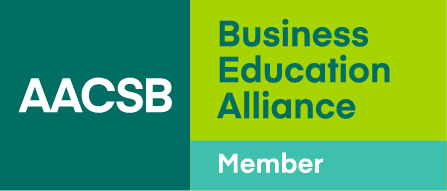3 Things Everyone Should Know About Business Schools
This post is for anyone who cares enough about business schools to read about them. That includes current and prospective students, talent and learning leaders in organizations, and educators, in business schools and beyond. It is intended to help you see through and sort through—to make better sense of—what’s written about business schools and business education. You might chuckle at the simplicity of the observations, you might find them surprising, but I hope you will ultimately find them useful.
Business schools receive lots of coverage in print and digital media, including popular business magazines and newspapers, countless rankings, as well as blogs and books. While much of the coverage is positive, business schools are also the subject of an extraordinary amount of criticism. I find value in most writings about business schools, whether they are positive or negative. In any article, I find nuggets of truth and valuable insights about unmet needs and pain points. I am grateful to those who take time to reflect on business education and offer remarks for public consideration.
But there is a problematic side to all the coverage of business schools. Much of it tends to perpetuate common misperceptions and can be misleading to decision-makers, especially to those who don’t already know much about the industry (e.g., prospective students). Positive or negative, poorly conceived or presented information about business schools can be harmful.
So here are three simple observations, based on my experience working closely with hundreds of business schools worldwide for nearly two decades, that offer an alternative perspective on the most common misrepresentations of business schools.
Business Schools Are Multifaceted
Try searching online for “best business schools” or “what they (don’t) teach in business school” or “why you should (or shouldn’t) consider going to business school.” What do you get? A lot. Look closely and you’ll find that many of the articles are only about the MBA, erroneously equating them to business schools. So beware if you are interested in undergraduate education, and that is likely to be most of you.
According to AACSB’s 2018 Business School Data Guide, 80 percent of the total business school enrollment reported is for undergraduate programs, while only 15 percent is for the master’s-generalist category, which is where we categorize the MBA. The mismatch between what most people are interested in and what is covered in print is most conspicuous in rankings. Almost all rankings focus on MBA programs, yet many are promoted as the top or best “business schools.”
The reality is that business schools are multifaceted and much more complex than they might initially appear. They offer a wide variety of degree programs. Many also provide executive, non-degree education; engage in interdisciplinary education and research; maintain multilateral international collaborations; manage student projects and groups around the world; participate in business plan competitions; support a vast array of student organizations; and more. Still, most people tend to over-simplify the work of business schools.
By ignoring many dimensions of business schools, we risk missing the very things we are looking for. For example, some writers (including some well-known business leaders) advise young people not to go to business schools if they want to start their own businesses. They argue that the MBA has been built for people who take jobs in existing companies, rather than for people who make jobs by creating companies. Even if that were the case, and many others have argued that it is not, what these articles miss is that many business schools have introduced non-MBA programs for budding entrepreneurs, often partnering with science and engineering programs to do so. Many business schools also support new business creation through incubators and accelerators, business plan competitions, and hackathons.
The same caution applies to social impact. For many years now, business schools have been introducing programs for careers in the nonprofit world and public sector. In addition, business students are provided opportunities to work on social impact and sustainability projects, as well as collaborate with peers in responsibility-centered student organizations and initiatives. Take a look, for example, at what’s happening at Net Impact and Aim2Flourish. More and more, business schools are engaging directly in economic and social development initiatives, serving as powerful anchors in their local communities.
Business Schools Are Diverse
We have a tendency to think all business schools are the same, and that perception is reinforced by many people who write about them. The author of a recent article wrote, “for the most part, business schools all assume a similar form.” That is far from the truth in my experience.
Business schools are incredibly diverse. The most obvious differences between schools are in the size and range of degree programs offered. But looking below the surface, we find important differences in curricula content, pedagogies, and structure, especially today with so many hybrid combinations of residential and online teaching. Business schools also have important differences in funding models, organizational structures, and governance. And, yes, we are finding more and more diversity in the faculty models employed by schools, including the extent to which practicing managers teach, the use of tutors and instructional designers, and the breadth of what faculty are expected to do.
AACSB started in the U.S. more than a century ago with just 17 schools. Today it is a global organization, with more than 1,600 members across 100 countries. In globalizing we have been impressed less by the similarities and more by the differences in our member institutions. We see straightforward differences, such as in the admissions process, program structure, research expectations, partnerships, business models, and the like. For example, compared to full-time MBA programs in the U.S., programs at European schools tend to be shorter, emphasize international experience, and are mostly restricted to students who already have managerial experience. In Asia, we often see multiple business schools with different strengths as part of the same institution.
Still deeper differences exist that are influenced by political, economic, and social factors. For example, European and American schools carry different underlying views about capitalism, as well as different views about the importance of market failures and the responsibilities of managers. In Asia, we often see strands of ancient philosophies and culture. I use these last two examples because some of the most vocal critics of business schools argue that business schools are instruments to expand or preserve capitalism and that they are too firmly grounded in assumptions about rational, self-interested behavior.
Moving forward, the boundaries will continue to blur between business schools as currently defined (e.g., offering degree programs) and other organizations that provide business and management education, such as leadership training institutes, digital learning platforms, and company-based learning programs. At AACSB, we are talking about a broader context of “business education” as well as business schools—and we are learning more about the incredibly diverse set of organizations at the fringes of the higher education ecosystem.
Business Schools Are Changing
The curriculum review and revision cycle in business schools has been accelerating. Many try to revamp their curricula every three years and incorporate modifications and adaptations between revision cycles. I am hearing about data analytics programs built for annual adaptation, and modular programs that can be trashed and rebuilt at any time. AACSB Accreditation, which operates on a five-year cycle, provides clear guidelines for curriculum management. Schools must look ahead, engage stakeholders, and regularly assess whether learning goals are being met—and they must “close the loop” by changing curricula based on their assessments.
As business schools have sped up their processes, it has become harder to keep up with what they are actually doing. Many critics of business schools don’t even bother. In a recent article arguing that “business schools have no business in the university,” 19 different years were mentioned. Fifteen of them were from more than a decade ago, going all the way back to 1862. The remaining four years mentioned were: 2011, a year the author says job prospects for business graduates were substantially better than for non-business graduates; 2012, when Forbes declared business schools to be “recession proof”; 2016, when the Miami University business school received a 40 million USD gift; and 2017, when Harvard Business School exceeded its 1 billion USD fundraising goal. Hardly evidence that business schools don’t belong in universities.
There are some clear patterns in the way schools are changing. For example, they are connecting more with practice (e.g., experiential learning) and with their local communities—serving as catalysts for innovation. And they are also doing things to differentiate themselves, such as focusing on specific sectors, collaborating based on the unique strengths of other schools on campus (e.g., in science and technology). Change is not making schools more alike, but rather, more diverse.
That is not to say that business schools have been keeping pace with the incredible changes happening in business and society. They are still part of an industry, higher education, that values tradition more than innovation. Built over centuries, the formal structures, rules of the game, traditions, and cultures once offered a clear way forward for any school willing to invest in “quality” and reputation. Today, those same structures can hinder change by making it risky for school to deviate from them. But even that is starting to change, with AACSB citing innovation as one of its accreditation pillars, articulating a Collective Vision for Business Education, looking into the transformation needed to support more continuous, lifelong learning, and supporting ambitious efforts to make business school research more valuable.
To summarize, by working extensively with business schools, I have come to view them as multifaceted, diverse, and changing. These are simple observations, to say the least, but perhaps they are surprising to many people who have been conditioned to believe that business schools are singularly focused on the MBA, are homogeneous, and are never-changing. I hope each observation helps you get more out of whatever you read or hear about business schools and business education.
So the next time you come across a published MBA ranking, use it as an excuse to explore the wide range of business programs not being considered. If an author pigeon-holes business schools, look for counter-examples—schools that are breaking the mold. Point them to Innovations That Inspire collection and classes of Influential Leaders. If someone claims business schools have been reluctant to change, ask how long it has been since they’ve visited one, talked to the students and faculty, and taken a close look at the curricular and extracurricular offerings. Invite them to visit your business school.
By questioning the stereotypes and exploring business schools with an open mind, I’m confident that you will come to view them as I do. Imperfect, yes, but striving to make a positive difference in a rapidly changing world. Business schools are dynamic institutions where diverse participants are addressing the most challenging questions facing business and society.
Dan LeClair previously served as chief innovation and operations officer at AACSB before joining GBSN.






